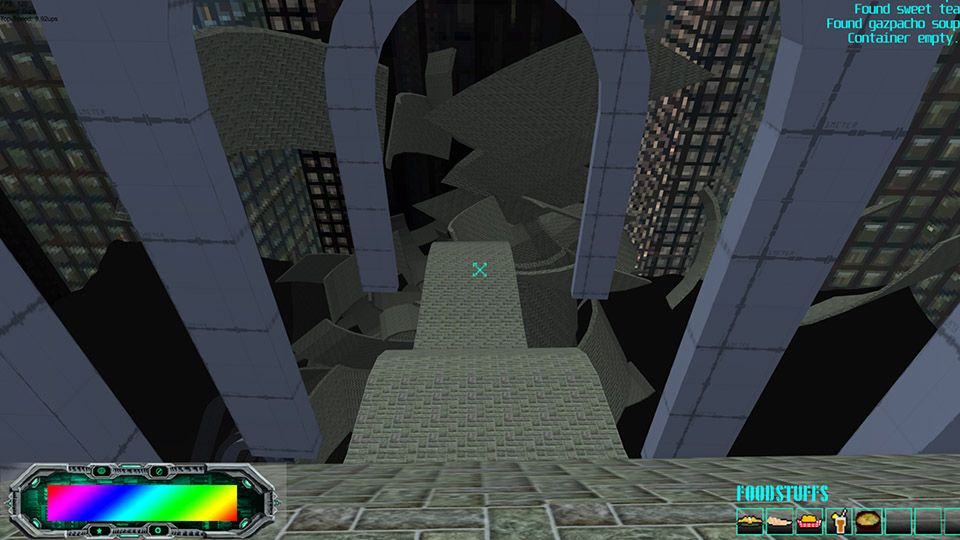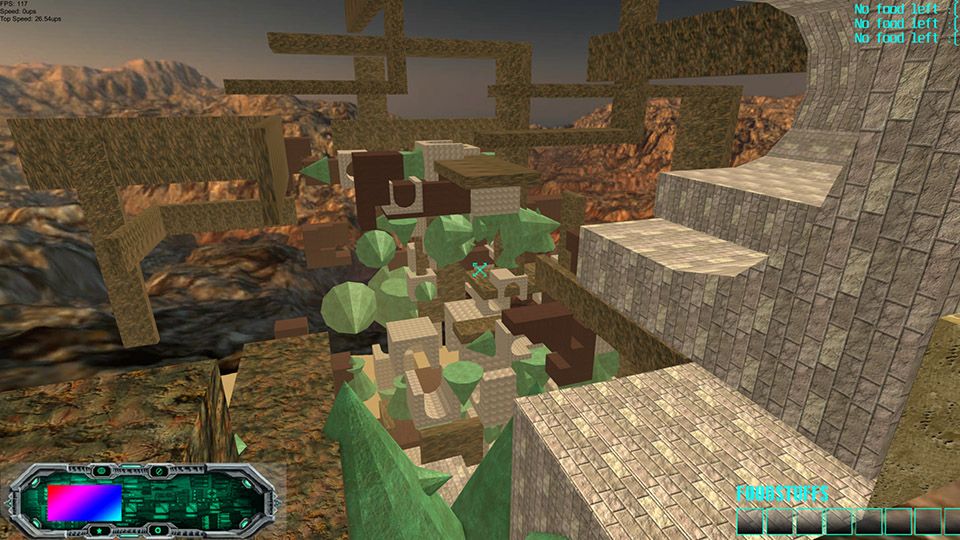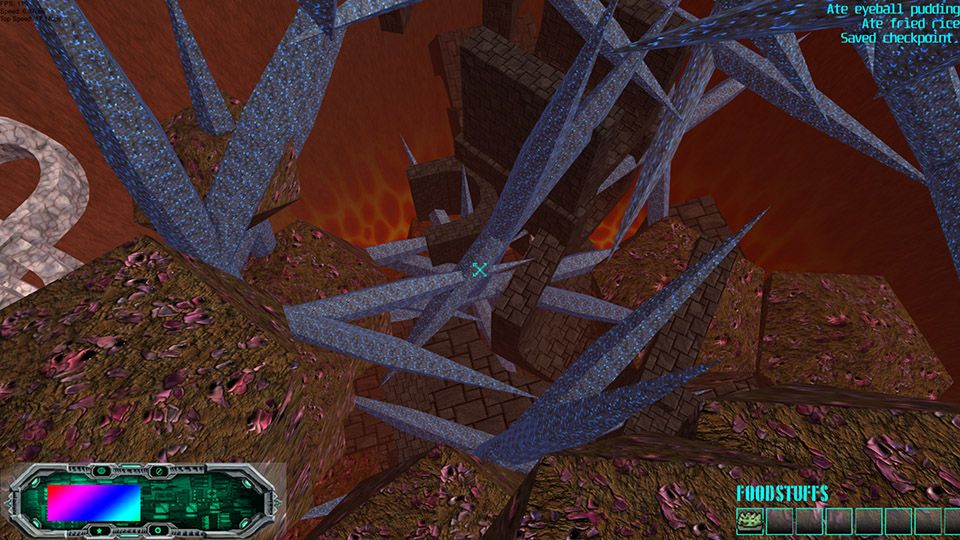[fr0g] clan official server 24/7 zk map (for stranger)
by mkapolk
Windows/free/download/0, 1 or infinity hours
"an 'anti-climbing' game"
The computer scientist William van der Poel famously wrote that, if you are a computer scientist, 'The only reasonable numbers are zero, one and infinity.'
Lately I've been noticing that, if you are a game designer with commercial aspirations (which in 2021, means basically every indie and big-studio game designer) then the only available number is three. Commercial games, in particular, can be characterized as 'Three-in-Three-in-Three'.
The evil wizard can only be defeated by magical artifacts – three, as it happens – a sword, a shield and an amulet. You'll want to start with the sword, which has been broken into three pieces. The first piece is inside a crypt with three skeletons! Oh, I have a thing that'll help with killing skeletons, and I'll trade it to you for three badger skins. Big-budget games picked up this habit as a way of stretching their running length, but I guess the presumption is that three is the perfect number: getting the first badger skin is novel. The second one allows me to experience mastery. And the third is the last one I'll tolerate before quitting the game. Three is the hallmark of what we call Good Game Design: the art of getting a player to skate right on the very edge of pressing Alt and F4 for the longest possible time.
The problem is that, if you play a lot of games, as I do, you can develop an allergy to the number three. At the first hint of three-ness in a game, your eyes can go triangular and everything in the whole experience appears as a three-sided chore. At that moment, I no longer want to skin a single badger, or club a single skeleton, much less journey down the fractal expansion of chores necessary to vanquish the evil wizard. Anywhere I see three of something, it tells me that it wasn't interesting enough for four repetitions, and that makes me wonder if it was after all interesting enough for two, or even one. Three-ness, in games, is a telltale sign that the designers were anxious about whether their games were long enough (and hence commercial enough), but not confident that their games were interesting enough to support more than three of anything.
("Name names!", I hear you yelling. "Which videogames are you sub-blogging?". I am sorry, but, it is nearly every game I have played for the past five years, and you can trace the pattern back to the 90s. I am sure your favorite game is a Three-in-Three-in-Three, and probably you are even making a Three-in-Three-in-Three yourself. Probably I am making one.)
The issue cannot simply be that three is always one or two too many. Anyone who loves videogames has fallen in love with a repetitive task that stretches far beyond merely three. I've run Nethack and Noita a thousand times. I merged a million tiles in Threes, somewhat ironically, and watered a billion seed-plots in Harvest Moon. I trudged a trillion miles in Death Stranding, and I play the Spelling Bee every day of the week. If you can trick me into playing another clicker game, I will click the mouse a literally-infinite number of times. Decades have passed since my first compulsive relationship with a game yet I have still not tired of infinitely repeating tasks.
On the other hand, my enduring appetite for novel experiences tells me that I will never tire of tasks that I do only once. As I play through the latest warmly received game that has Good Game Design I always find myself wondering: could it be that zero, one and infinity are the only reasonable numbers in game design?

With that in the background, I hope it will be easier to explain why I'm excited to be playing something like [fr0g] clan official server 24/7 zk map (for stranger) – let's call it zk map. This game was made in 2019 as a 'klikmas' gift by Glorious Trainwrecks veteran mkapolk, for a friend who had asked for an 'anti-climbing game'.
'Anti-climbing', it turns out, just means carefully descending a mountain of objects. The game uses a standard first-person controller with a few important tweaks: you'll die if you fall too far, but you can arrest your momentum a little by bouncing off walls, like a 3D version of Sylvie & Hubol's recent masterpiece Clockwork Calamity. Like a real mountainclimber hammering in pitons and ropes, you can checkpoint your progress as you go down, but this may commit you to an imperfect route, slowing you down or even trapping you. Once you reach the ground, the run is finished.
There is of course no stuff in the game. There are no quest markers, inventory, narrative beats. It's just an obstacle course, an 'obby' in the parlance of Roblox players. It is the opposite of a Three-in-Three-in-Three. You can play it for a few minutes, roll it around your mouth and spit it back out. Or you could play it for weeks, bringing in friends for online tournaments.

You do a lot of downward climbing in zk map, but the core activity is route-finding. You look across a haphazard pile of shapes, and your eyes trace possible ways down, imagining the lines of sight and obstructions along each meandering path. Route-finding is one part forward planning and two parts 'dead reckoning': making a choice and then figuring out how to get yourself one step out of the mess you just made. There is something magical about route-finding in a videogame, since videogame worlds are untrammeled, immaculate spaces. Every unguided turn you take is yours and yours alone.
The thing about making a game involving route-finding is you can't really get there by designing great routes. No matter how good your level design skills are, if the player is following a path you laid out for them, they aren't really route-finding at all. The player becomes too aware of your intentions, and their own autonomy becomes subsumed in them. As mkapolk explains:
My process for making the levels was to scatter geometry more or less randomly and then try to traverse it. Sometimes when I was going down a map if I thought that an area shouldn't be a dead end I'd add some more stuff to it, but that's about as far as it went.
You can construct a level that players can route-find through, but you can't design it... or to put it more precisely, you can't crack out the Good Game Design if you want players to experience route-finding. To pass through a well-designed level is a hike, not an expedition.

It's worth bearing in mind that the game was made and given as a gift. A game like zk map cannot be sold. When a designer hangs up their shingle offering to exchange games for money, the player expects to see craftsmanship, to see some evidence of work. They want to know they are getting value for money. Perhaps this is why there are so few games where the player can spend some time finding routes.
We indie designers have sometimes tried to square that circle by making games with infinitely randomized courses, which provides the player with eternally virgin terrain while also requiring a terrifying show of craftsmanship on the designer's part. Yet that never quite has the same effect – in those games there is really just one space to traverse (though it is a probabilistic, wiggly space) and there are several carefully designed hikes through that one space, though we call them 'strategies' instead of routes. That is why you never quite feel like you are route-finding when you play Spelunky or Canabalt or Ape Out. There's no easy way around this problem! And that makes route-finding an inherently uncommercial idea in a videogame.
Thus in 2021, when it feels like every game is doing dual service as a piece of art and a product launch for a tech startup, an experience like zk map feels strange and rare and powerful. It's not offering attractive original art, a compelling story or Good Game Design. It doesn't promise fairness or unbrokenness or the absence of dead-ends. Best of all, it doesn't need you to do anything three times.
Just climb down this pile of things. Never, once, or forever. That sounds pretty good to me.